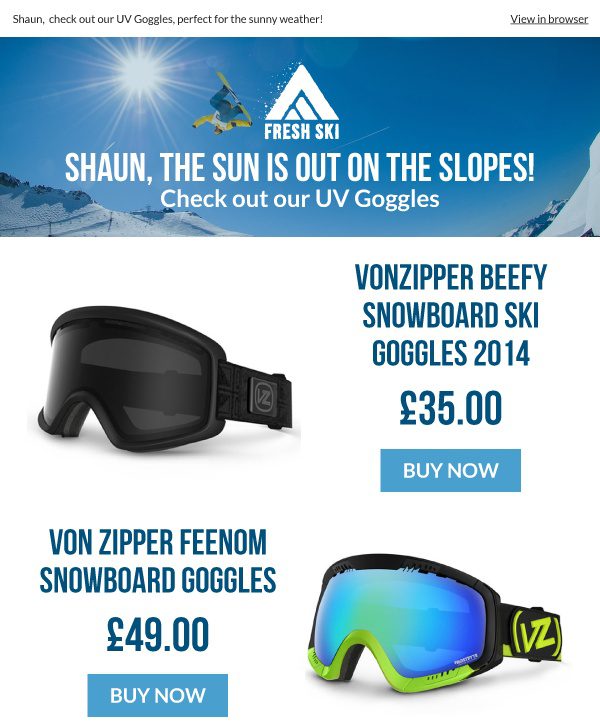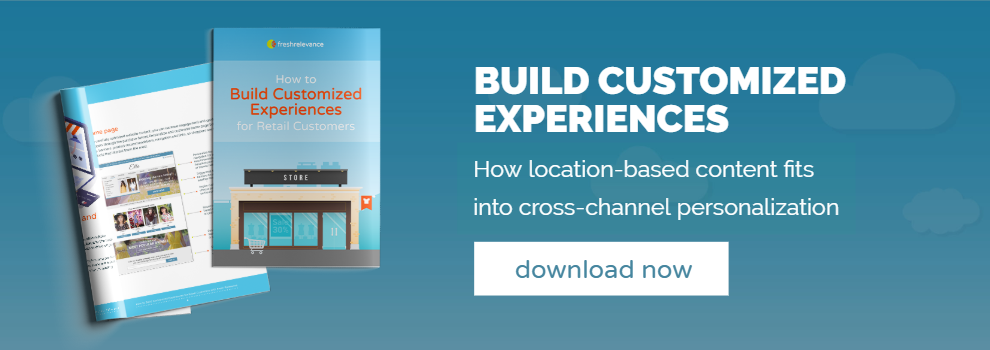Real-time location-based marketing is a great way to increase the relevance of your emails – because content changes dynamically depending on the customer’s location at open time.
Subscribers benefit from a more convenient experience, since you provide them with the most useful information at the moment they open the message. This in turn boosts conversions from your email channel as part of your marketing strategy, as customers are targeted with the content that they are most likely to click on at the given time.
The growth of mobile makes geo-targeted content more important than ever, as shoppers are increasingly consuming content – including emails – while out and about.
Here are nine ways to use real-time geo-targeting examples to increase email engagement:
1. Nearest store location and opening times
This is the simplest form of location-based content – when opened, your email shows the nearest location for your business.
Our research shows that many customers still prefer to try products in brick and mortar stores before buying online. Consumers also like to snack on mobile content while on the move. Providing the nearest location could be what it takes to drive these shoppers to your physical store, based on location data available.
Depending on the nature of your business, either base the information on the shopper’s current location, or their delivery address to target consumers..
Also include today’s opening hours – or tomorrow’s times if you’re already closed today.

2. How to find us
This is an extension of #1. When a shopper clicks on the dynamic content that shows your nearest location, it redirects to Google Maps, which shows directions of how to get there.
For example, suppose you are a car hire company with a presence at many airports. When a client asks for car hire details at (say) PHL and you send them an email, wouldn’t it be great if they could click and get the geographic location and the exact route to where they can collect their car? Simple and impressive!
While you can do the same thing with a static email, it’s harder because you have to integrate the data from your website into your ESP, which needs involvement from both IT team as part of your marketing efforts.
3. Language
Even if your emails are in English, it’s friendly to greet each shopper with a few words in the current local language by using location based targeting.

4. Prices and currency
Personalize the links from your email to your website, so that shoppers clicking through get the current default language, prices and currency as part of your online marketing campaigns.
5. Segment your offers
Show different offers in different cities and countries either because local tastes vary, or so you can test out an offer in one location before rolling it out more widely. (This is also called geo-fencing.)
6. Segment your product recommendations
Show different product recommendations for different cities and countries, and target users based on where they are now.

7. Weather-based offers
Sales are affected by the general weather conditions – whether it’s cold or warm, calm or windy, wet or dry – and you should direct your offers where they will be most effective.
You can use location targeting as part of your marketing rules to show different content depending on the weather, or show a local weather forecast to inspire customers to buy certain weather-specific items with the real-time location data available.
8. Season-based offers
Online retailers can leverage geotargeting to account for varied target markets’ seasonal differences. In Australia and New Zealand, for instance, summer runs from December to February, when most American shoppers can’t get enough winter wear.

9. All types of real-time content
Embed the right Twitter feed or web content for each shopper’s current state or country. You can also show coupons and countdown timers most relevant to a customer’s current location.

Download the ebook to find out more about how real-time location-based content fits into a personalized web and email strategy:







